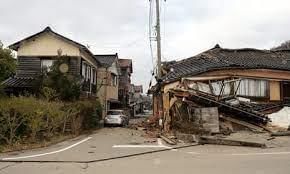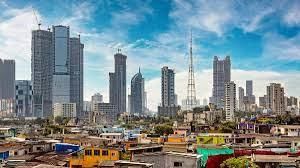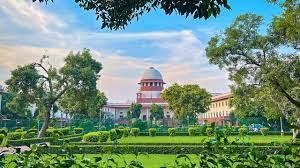UPSC Daily Current Affairs- 3rd January 2024 | Current Affairs & Hindu Analysis: Daily, Weekly & Monthly PDF Download
GS-I
Leap Years: Their Significance and Calculation
Subject: Environment & Biodiversity

Why in News?
In 2024, we'll have a leap year, where an extra day is added to the calendar every four years. So, February 2024 will have 29 days instead of its usual 28.
What is a Leap Year?
- Definition: In a leap year, there are 366 days instead of the usual 365, and the extra day is added to February.
- Purpose: The extra day compensates for the additional time the Earth takes to complete its orbit around the Sun.
Reason for Leap Year Introduction
- Astronomical Basis: The Earth takes approximately 365 days, 5 hours, 48 minutes, and 46 seconds to orbit the Sun.
- Time Adjustment: To align with this duration, an extra day is added every four years, rounding up the additional time to about six hours annually.
Historical Background
- Julian Calendar: The concept of the leap year was first introduced by scholars under Julius Caesar in 46 BC through the implementation of the Julian calendar.
- Gregorian Calendar Reform: In 1582, Pope Gregory XIII reformed the calendar by skipping 10 days to correct accumulated discrepancies.
Leap Year Calculation
- Gregorian Calendar Rules: The leap year does not occur every four years precisely. Years ending in 00 are generally not leap years unless divisible by 400.
- Examples: The year 1900 was not a leap year, but 2000 was, following this rule.
Source: The Economic Times
Tsunami Warnings After Japan Earthquakes
Subject: Geography

Why in News?
Powerful earthquakes, including an initial magnitude of 7.6, hit Japan, resulting in tsunami alerts issued by North and South Korea as well as Russia. Tsunami waves affected several coastal regions in Japan, prompting urgent warnings for evacuation.
Tsunami Overview
- Tsunami is a series of massive ocean waves caused by seismic activities like earthquakes or volcanic eruptions beneath the ocean.
- Characterized by long wavelengths and high energy, tsunamis can traverse entire ocean basins, leading to extensive destruction upon reaching coastlines.
- These waves can reach considerable heights, moving swiftly over deep waters and slowing down in shallower areas.
Factors Behind Tsunami Creation
- Undersea Earthquakes: Movement of tectonic plates causes seismic waves that travel through water, leading to tsunami formation.
- Volcanic Eruptions: Volcanic events, especially undersea, displace water, causing tsunamis, notably during collapses of volcanic islands or explosive eruptions.
- Landslides: Submarine landslides, due to various reasons, displace water, creating significant tsunami waves.
- Meteorite Impact: Although rare, the impact of a large meteorite or asteroid in the ocean can generate waves similar to tsunamis.
- Underwater Explosions: Human activities, like underwater explosions, possess the potential to produce tsunamis.
Devastation Caused
- Tsunami waves, traveling at high speeds across the open ocean, unleash devastating force upon reaching coastal areas.
- Unique energy and wavelength characteristics differentiate them from regular ocean waves, causing widespread damage during inundation.
Tsunami Preparedness
- Early warning systems and preparedness measures play a crucial role in minimizing the impact of tsunamis on coastal communities.
- Swift responses and effective communication are essential components of mitigating the destructive effects of tsunamis.
Tsunami Preparedness in India
- Indian Ocean Tsunami Warning System (IOTWS): India actively engages in the IOTWS, equipped with strategically placed sensors to detect underwater earthquakes and monitor sea level changes, issuing timely coastal warnings.
- Tsunami Early Warning Centre (ITEWC): Situated at the Indian National Centre for Ocean Information Services (INCOIS) in Hyderabad, ITEWC offers advisories to stakeholders.
- Public Education: INCOIS collaborates with the National Disaster Management Authority (NDMA) to conduct drills, workshops, and training sessions for tsunami awareness.
- Community Preparedness: INCOIS leads the UNESCO-IOC's "Tsunami Ready" initiative, certifying villages like Venkatraipur and Noliasahi in Odisha as Tsunami-ready, a first in the Indian Ocean region.
- Software and Dissemination: INCOIS utilizes specialized software for earthquake monitoring and multi-mode dissemination of early warnings. Their Decision Support System automatically generates and shares alerts through the NDMA Common Alert Protocol (CAP). Additionally, the "SAMUDRA" mobile app provides marine users with access to ocean data and advisories.
Why is Japan Prone to Earthquakes and Tsunamis?
- Pacific Ring of Fire: Japan sits within the 'Pacific Ring of Fire,' a highly active seismic zone encircling the Pacific Ocean known for frequent earthquakes and volcanic eruptions.
- Tectonic Plate Dynamics: The region experiences the interaction of multiple tectonic plates like the Pacific, Eurasian, and Indo-Australian Plates. Their continuous collision and subduction cause earthquakes, volcanic activities, and potential tsunamis.
- 2011 Disaster: In 2011, Japan faced a catastrophic 9.0 magnitude earthquake and subsequent tsunami. Coastal areas were severely affected, leading to the loss of approximately 18,000 lives and displacing tens of thousands. The tsunami also triggered a nuclear crisis at the Fukushima power plant, ranking among the worst nuclear accidents post the 1986 Chernobyl incident.
Source: Indian Express
India’s Transition in Slum Definitions
Subject: Indian Society

Why in News?
- Nipesh Narayanan's study, released in the Economic & Political Weekly on October 21, 2023, explores the evolving perception of slums in Indian parliamentary discussions spanning 1953 to 2014.
- This transformation in understanding has notably impacted governmental strategies and attitudes concerning slums.
Evolution of Discourses on Slums
- Parliamentary Debates Analysis: Narayanan analyzed 1,228 debates in the Rajya Sabha and various policy documents, including Five-Year Plans, to trace the evolution of discourses surrounding slums.
- Dynamic Definitions: The study highlights the fluid nature of slum definitions and the tendency to overlook urban disparity as a causal factor in slum formation.
Eras of Changing Perspectives
- 1950s-1960s: Initially, slums were perceived as a consequence of partition and rapid urban growth. The emphasis was on elimination due to health risks and limited space, neglecting socio-economic aspects like migration. The enactment of the Slum Areas Act of 1956 signaled a notable change, allowing government involvement in these areas.
- Early 1970s-Mid-1980s: The narrative shifted towards viewing slums as unavoidable entities needing development rather than eradication. Urban planning emerged as a crucial tool, relocating slums to city outskirts and prioritizing fundamental amenities over demolition.
- Mid-1980s-Late 1990s: Following the 1985 report by the National Commission on Urbanization, cities and slums were recognized as economic assets. This period emphasized housing policies and infrastructure growth, guided by economic motivations.
- 2000s-2014: The 2001 Census provided detailed slum data, leading to targeted programs. Slums evolved from social concerns to technical and economic entities. Strategies focused on upgrading, securing legal and property rights for slum residents.
Slum Formation and Government Response
- Causality and Complexity: The research identifies urban planning issues, population growth, land pressure, and housing affordability as key factors in slum formation.
- Government Role: The Union government’s role shifted to funding State governments for urban improvement, with a focus on data-driven policies.
Technocratic Solutions and Challenges
- Technological Reliance: The increasing dependence on technological solutions for urban issues is evident in current government policies.
- Critical Examination: The article warns against using slums merely as a tool for anti-poverty policies and emphasizes understanding slum formation beyond numerical data.
Conclusion
- Historical Insights: Narayanan’s analysis provides valuable insights into the historical shifts in government perceptions and actions towards slums.
- Significance for Urban Studies: This research contributes significantly to the understanding of urban dynamics, socio-economic inequalities, and the complexities of slum life in India.
Source: The Hindu
GS-II
Suspending the Free Movement Regime: India’s Border Policy with Myanmar
Subject: International Relations

Why in News?
The Indian government declared intentions on January 2 to eliminate the Free Movement Regime (FMR) along the Myanmar border, necessitating visas for residents who could previously move across freely.
About Free Movement Regime
- Introduced in the 1970s, the Free Movement Regime (FMR) permitted individuals residing within 16 km of the India-Myanmar border to travel up to 16 km into the neighboring country without needing a visa.
- India shares a 1,643 km border with Myanmar, crossing through Arunachal Pradesh (520 km), Nagaland (215 km), Manipur (398 km), and Mizoram (510 km).
- This arrangement acknowledged the strong familial and ethnic ties among communities on both sides of the unfenced border.
- Last updated in 2016 in alignment with India's Act East policy, the FMR faced suspension in Manipur since 2020 due to the COVID-19 pandemic.
Reasons for the Policy Shift
- Security and Illegal Activities: The FMR has been under scrutiny for facilitating illegal immigration, drug trafficking, and insurgency.
- Refugee Influx Post-Coup: Following Myanmar’s military coup in February 2021, over 40,000 refugees entered Mizoram, and around 4,000 entered Manipur, exacerbating security concerns.
- Local Government Stance: Manipur’s Chief Minister urged the Ministry of Home Affairs to cancel the FMR and complete border fencing, linking ethnic violence in the state to the free movement across the border.
Implications of Scrapping the FMR
- Impact on Local Communities: Ending the FMR could significantly affect the daily lives of border residents, who depend on cross-border access for various needs.
- Cultural and Social Disruption: The policy change might strain the cultural and social fabric of communities with shared ethnicities across the border.
Way forward
- Border Fencing: The government plans to fence about 300 km of the border, with a tender expected soon.
- Regulatory Revisions: Experts suggest refining the FMR to better regulate movement while maintaining cross-border ties.
- Infrastructure and Trade: Enhancing infrastructure and formalizing trade at designated entry points could mitigate some negative impacts.
- Community Engagement: Involving border communities in decision-making is crucial for effective and sensitive border management.
Conclusion
- Balancing Security and Community Needs: The decision to end the FMR requires a nuanced approach that considers both national security and the rights of border communities.
- Diplomatic Engagement: Strengthening diplomatic relations with Myanmar is key to managing this transition effectively.
- Future Challenges: As India navigates this policy change, it faces the challenge of securing its borders while respecting the socio-economic realities of border populations.
Source: The Hindu
CAA Rules to be notified before 2024 General Elections
Subject: Governance

Why in News?
Officials from the Ministry of Home Affairs (MHA) have confirmed the probable notification of the Citizenship Amendment Act (CAA) rules ahead of the upcoming general election.
About Citizenship Amendment Act, 2019
- Approval in Parliament: The Citizenship Amendment Act (CAA) received approval from Parliament in December 2019 but awaits execution.
- Current Status: The Ministry of Home Affairs (MHA) has not yet issued the regulations guiding the implementation of the Act.
- Implementation Timeline: A one-month period remains for the CAA to be enacted before the commencement of the next Budget Session, slated to begin on February 1, as reported on December 29, 2023.
Key Provisions of the CAA
- Facilitation of Citizenship: The CAA aims to provide citizenship to undocumented individuals from six non-Muslim communities from Pakistan, Bangladesh, and Afghanistan who entered India illegally.
- Eligible Communities: Hindus, Sikhs, Buddhists, Parsis, Christians, and Jains from the three countries, who entered India on or before December 31, 2014, are eligible.
- Reduced Residency Requirement: The Act reduces the requirement of aggregate stay in India for these applicants from 11 years to six years.
Salient Features of the Act
- Definition of Illegal Migrants: The Citizenship Act, 1955, is amended to exclude certain communities from Afghanistan, Bangladesh, and Pakistan from being treated as illegal migrants.
- Citizenship by Registration or Naturalisation: The Act modifies the qualifications for citizenship, reducing the residency requirement for specified communities to five years.
- Exemptions: The provisions do not apply to tribal areas of Assam, Meghalaya, Mizoram, and Tripura, and the “Inner Line” areas under the Bengal Eastern Frontier Regulation, 1873.
- Cancellation of OCI Registration: The Act introduces additional grounds for cancelling Overseas Citizen of India (OCI) registration.
Recent discussions over CAA
- 2011 UPA Government Decision: The Congress-led UPA government resolved to provide Long Term Visas (LTVs) to Hindus and Sikhs from Pakistan citing religious persecution in 2010.
- Potential Legal Changes: Government officials have discussed the potential of extending the 2014 cut-off through legal amendments if necessary.
- Uncertain Beneficiary Count: The precise number of undocumented individuals who will benefit from the CAA in states like West Bengal and Assam remains unspecified.
- Pending Applications: Approximately 80,000 applications from Pakistani Hindus are awaiting processing, with 35,000 lodged in Rajasthan alone.
- Online Citizenship Process: Since 2018, the citizenship application process for the six identified communities has been digitalized, with district collectors and home secretaries delegated powers to oversee this process.
Challenges in the Online Process
- Issue with Pakistani Passports: The online portal does not accept expired Pakistani passports, necessitating renewal through the Pakistan High Commission.
- Visa and Citizenship Pathway: Most Pakistani Hindus and Sikhs entered India on long-term or pilgrim visas, which precede citizenship.
Conclusion
- Balancing Security and Humanitarian Concerns: The implementation of the CAA requires a careful balance between national security interests and addressing humanitarian needs of refugees.
- Anticipating Impact: The notification of the CAA rules will mark a significant shift in India’s citizenship policy, particularly affecting refugees from neighboring countries.
- Ongoing Developments: As the government finalizes the CAA rules, the impact on affected communities and the legal landscape will be closely monitored.
Source: The Times of India
e-SCR Portal
Subject: Government Policies and Interventions

Why in News?
The e-SCR portal commences in January 2023 with a mere 2,238 translated judgments but concludes the year with an excess of 31,000 rulings available in translation.
e-SCR Portal: Digitizing Supreme Court Judgments
- The e-SCR portal is an initiative by the Supreme Court to offer digital versions of its judgments similar to the official law reports.
- Developed with the help of the National Informatics Centre, the portal incorporates an elastic search technique for efficient database searches.
- Search options include free text search, search within search, case type and case year search, judge search, year and volume search, and bench strength search.
- The portal grants free access to approximately 34,000 judgments for lawyers, law students, and the general public.
- Judgments will be available on the Supreme Court website, mobile app, and the National Judicial Data Grid (NJDG) judgment portal.
National Judicial Data Grid (NJDG): Key Facts
- NJDG serves as a national repository for data on cases across India’s courts, covering instituted, pending, and disposed of cases.
- Developed by the National Informatics Centre (NIC) in collaboration with the Registry’s in-house software development team.
- Features an interactive interface and analytics dashboard, offering case-related information, statistics on institution, pendency, and disposal of cases, case types, and year-wise breakdown for the Supreme Court of India.
- The database on the NJDG portal is regularly updated to provide current and comprehensive information.
Source: The Hindu
GS-III
Inflation in India: Demand vs. Supply
Subject: Indian Economy

Why in News?
Lately, India has been consistently troubled by inflation, but the Reserve Bank of India (RBI) has noted shifting dynamics impacted by a combination of supply and demand factors.
- Between January 2019 and May 2023, around 55% of the Consumer Price Index (CPI) headline inflation is linked to factors related to the supply side, while the influence of demand-related drivers on inflation amounted to 31%.
What has Caused Inflation in India in Recent Years?
- Inflation in recent years in India was primarily driven by supply disruptions during the two Covid-19 waves.
- The pandemic's onset led to substantial reductions in production and demand, causing a significant downturn in economic growth. This phase also witnessed lowered commodity prices due to decreased demand.
- Upon the economy's reopening, facilitated by vaccine distribution and pent-up demand release, the resurgence of demand outpaced supply recovery. This imbalance escalated pressures on commodity prices.
- The 2022 Russia-Ukraine conflict compounded supply chain complexities and exacerbated the strain on commodity prices.
What is the Methodology for Assessing Inflation Causes?
- Unforeseen shifts in prices and quantities within a month determine whether inflation is demand-driven (prices and quantities move in the same direction) or supply-driven (prices and quantities move in opposite directions).
- An increase in demand leads to a rise in both prices and quantities, while a decrease in demand results in a reduction in both.
- Inflation is considered to be supply-driven if there is an unexpected change in prices and quantities that move in opposite directions. In this case, a decrease in supply is linked with a lower volume but an increase in price, and vice versa.
- Demand and supply factors at the sub-group level were combined using the CPI weights to assess overall headline inflation.
- Headline inflation is a measure of the total inflation within an economy, including commodities such as food and energy prices, which tend to be much more volatile and prone to inflationary spikes.
- The headline inflation figure is reported through the Consumer Price Index (CPI), which calculates the cost to purchase a fixed basket of goods to determine how much inflation is occurring in the broad economy.
What is Inflation?
- Inflation, as outlined by the International Monetary Fund (IMF), represents the pace at which prices rise within a specified duration, encompassing a comprehensive measure of overall price escalations across goods and services or specific sectors.
- It serves as an indicator of the increasing cost of living, signifying the extent to which a specific set of goods and/or services has become pricier over a particular period, often a year.
- In India, inflation holds significant impact due to economic disparities and a vast population.
- Various Causes of Inflation:
- Demand-Pull Inflation: Occurs when the demand for goods and services surpasses their supply. Increased overall demand prompts consumers to pay higher prices for available goods, leading to a general price surge. A robust economy with high consumer spending can generate excessive demand, driving prices upwards.
- Cost-Push Inflation: Arises from escalated production costs for goods and services. Factors like heightened incomes, increased raw material expenses, or disruptions in the supply chain contribute to this inflation type.
- Built-In or Wage-Price Inflation: Describes a cycle linking wages and prices. When workers demand higher pay, businesses may raise prices to offset increased labor expenses. This leads workers to seek further wage increases, perpetuating the cycle. Collective bargaining by labor unions can trigger higher wages, elevating production costs and subsequently prices for goods and services.
Source: The Hindu
|
51 videos|5377 docs|1138 tests
|
FAQs on UPSC Daily Current Affairs- 3rd January 2024 - Current Affairs & Hindu Analysis: Daily, Weekly & Monthly
| 1. What is the significance of leap years? |  |
| 2. How do you calculate leap years? |  |
| 3. What are the implications of tsunami warnings after Japan earthquakes? |  |
| 4. How does India define slums during its transition? |  |
| 5. What is the e-SCR Portal? |  |





















